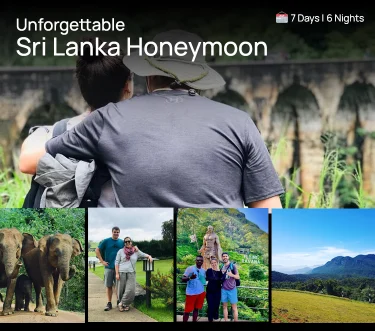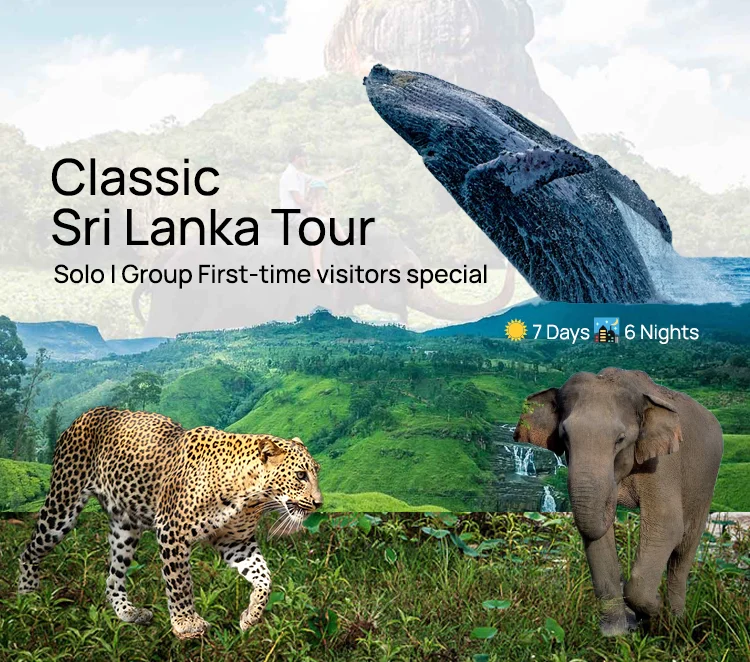15 Must-See Ancient Sites in Anuradhapura, Sri Lanka’s Sacred City
Anuradhapura, a UNESCO World Heritage Site, stands as a testament to Sri Lanka’s rich Buddhist heritage and ancient civilization. This sacred city is home to a plethora of historical landmarks, each narrating tales of devotion, architectural brilliance, and cultural significance. Whether you’re a history enthusiast, spiritual seeker, or curious traveler, Anuradhapura offers an immersive journey into the past. govt.sl
1. Jaya Sri Maha Bodhi (Sacred Bo Tree) – The Oldest Living Tree Planted by Humans
Location: Mahamewna Gardens, Anuradhapura, Sri Lanka
Historical and Spiritual Significance:
The Jaya Sri Maha Bodhi is not just a tree—it is one of the most sacred relics of Buddhism in the world. Planted

in 288 BCE, it is believed to be a sapling from the original Bodhi Tree (Ficus religiosa) under which Lord Gautama Buddha attained enlightenment in Bodh Gaya, India.
This sacred sapling was brought to Sri Lanka by Sanghamitta Theri, the daughter of Emperor Ashoka the Great of India and a revered Buddhist nun. Her journey marked a defining moment in Sri Lanka’s spiritual history, as Buddhism began to flourish throughout the island.
It is widely acknowledged as the oldest known living human-planted tree in the world with a documented history. Over the centuries, Sri Lankan kings, devotees, and pilgrims have protected and venerated this tree, making it a centerpiece of Buddhist heritage and devotion.
Religious Importance:
- Symbol of Enlightenment: Since it descends from the original Bodhi Tree, the Jaya Sri Maha Bodhi is believed to hold a direct spiritual connection to the Buddha’s enlightenment.
- A Site of Pilgrimage: It is one of the most visited and revered Buddhist shrines in Sri Lanka, drawing thousands of pilgrims every year—especially during Poya (full moon) days.
- Royal Patronage: Almost every Sri Lankan monarch since the 3rd century BCE has contributed to the tree’s care, construction of protective walls, terraces, and the surrounding temple complex.
The Tree & Its Surroundings:
- The tree is supported with golden railing posts and stone terraces, which were added to preserve its ancient limbs.
- The inner compound is reserved for rituals and offerings.
- Surrounding the Bodhi Tree are various shrines, ancient ruins, and offering tables where pilgrims light oil lamps and lay flowers in reverence.
- A sacred walkway allows pilgrims to circumambulate the tree in prayer and meditation.
What to Expect When Visiting:
- Devotees dressed in white, barefoot, often silently praying or meditating.
- The atmosphere is deeply spiritual and peaceful, enhanced by the soft rustle of leaves, chanting monks, and fragrant incense.
- Rituals such as lighting clay lamps, offering lotus flowers, and pouring water at the tree’s roots are common sights.
Why Visit?
- Spiritual Awakening: It’s a place where faith and mindfulness are palpable.
- Historical Journey: You’re standing before a living being that has witnessed over 2300 years of continuous devotion.
- Photographic Beauty: The fusion of sacred rituals, historic structures, and serene natural beauty makes it a photographer’s delight.
2. Ruwanwelisaya Stupa – Sacred Symbol of Buddhist Devotion
Location: Sacred City of Anuradhapura, North Central Sri Lanka
Built in 140 B.C. by King Dutugemunu, Ruwanwelisaya is one of the most sacred and iconic stupas in Sri Lanka. It

is believed to enshrine relics of the Buddha, including his collarbone, making it a revered pilgrimage site for Buddhists around the world.
Key Features:
- Height: Over 100 meters after restoration
- Design: Brilliant white dome symbolizing purity
- Surrounding Wall: 344 carved elephants “guard” the stupa
- Cultural Role: Part of both Solosmasthana and Atamasthana sacred sites
What to Expect:
- Peaceful ambience with monks and devotees offering flowers and incense
- Best time to visit: Early morning or late afternoon for a serene experience
- Dress modestly (white attire is ideal); shoes and hats must be removed
Travel Tips:
- Bring flowers, a shawl, camera, and water bottle
- Walk clockwise around the stupa as a sign of respect
- Visit on Poya (full moon) days to witness religious ceremonies
3. Thuparamaya Stupa – The First Stupa in Sri Lanka
Location: Sacred City of Anuradhapura, Sri Lanka
Thuparamaya is considered the oldest stupa in Sri Lanka, built in the 3rd century B.C. by King Devanampiya
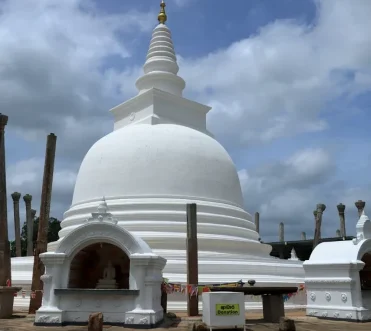
Tissa after Buddhism was officially introduced to the island by Arahat Mahinda Thera. It houses the right collarbone relic of the Buddha, making it a key pilgrimage site. amazinglanka.com+1travelsetu.com+1historyhit.com+1amazinglanka.com+1
Key Features:
- Shape: Bell-shaped stupa on a circular platform
- Historic Importance: First Buddhist religious structure in Sri Lanka
- Surrounded by granite stone pillars, once supporting a protective roof
- Part of the revered Atamasthana (8 Sacred Sites of Anuradhapura)
What to Expect:
- A peaceful spiritual setting ideal for quiet reflection
- Sacred rituals with pilgrims offering flowers and lighting oil lamps
- Historical ruins and inscriptions nearby for cultural exploration
Travel Tips:
- Best visited early morning or at dusk for calm and cooler weather
- Dress modestly and remove shoes at the entrance
- Bring offering flowers, water, and a camera for respectful photography
4. Abhayagiri Monastery & Stupa – A Center of Ancient Buddhist Learning
Location: North of Anuradhapura Sacred City, Sri Lanka
Founded in the 1st century B.C. by King Valagamba, the Abhayagiri Monastery was once Sri Lanka’s largest monastic complex. The massive Abhayagiri Stupa, standing at 75 meters, was a spiritual and intellectual hub for
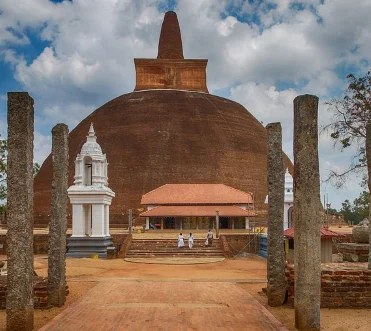
thousands of monks, blending Theravāda and Mahāyāna Buddhism.
Key Features:
- Height: Originally ~100 meters; now ~75 meters after restoration
- Monastic Ruins: Ancient meditation halls, stone sculptures, and moonstones
- Religious Significance: A powerful symbol of resilience and revival of Buddhism
- Cultural Legacy: A global Buddhist learning center for centuries
What to Expect:
- Explore extensive ruins across 200+ hectares of serene forested land
- View beautiful carvings and the famed Samadhi Buddha Statue nearby
- Feel the historic energy in one of Sri Lanka’s most spiritually rich sites
Travel Tips:
- Best time: Morning or late afternoon to walk the grounds comfortably
- Wear modest, light clothing suitable for walking
- Bring water, a hat, and a camera for your cultural journey
5. Jetavanarama Stupa – The Tallest Brick Structure of the Ancient World
Location: Anuradhapura Sacred City, Sri Lanka
The Jetavanarama Stupa, constructed in the 3rd century A.D. by King Mahasena, is one of the largest stupas in
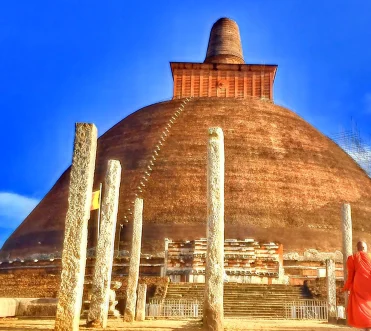
the world and a marvel of ancient engineering. Once rising to nearly 122 meters, it was the tallest stupa ever built using over 90 million bricks—a testament to Sri Lanka’s advanced craftsmanship and Buddhist devotion.historyhit.com+1en.wikipedia.org+1lankatourexperts.com
Key Features:
- Current Height: ~70 meters (restored from original 122 meters)
- Base Area: Spans over 8 acres
- Built on the site of the earlier Jetavana Monastery, a key Buddhist center
- Allegedly enshrines a part of the Buddha’s belt
What to Expect:
- A colossal red-brick structure that dominates the ancient skyline
- Peaceful surroundings ideal for meditative walks and photography
- Nearby ruins of monastic residences, image houses, and water tanks
Travel Tips:
- Best visited in early morning or evening for cooler temperatures and soft lighting
- Wear comfortable shoes (for walking to the site entrance) and modest attire
- Carry water, sun protection, and a camera for wide-angle shots
6. Samadhi Buddha Statue – A Masterpiece of Serenity in Stone
Location: Mahamevnāwa Park, Anuradhapura, Sri Lanka
The Samadhi Buddha Statue, carved in the 4th century A.D., is one of Sri Lanka’s finest examples of ancient

sculpture. Depicting the Buddha in deep meditation (Dhyana Mudra), this 7-foot-tall statue is renowned for its calm expression, perfect symmetry, and spiritual power.
srilankanexpeditions.com+2en.wikipedia.org+2amazinglanka.com+2
Key Features:
- Posture: Cross-legged, hands in lap – classic meditation pose
- Material: Carved from a single granite block
- Artistic Significance: Influenced later Buddhist art across Asia
- Considered a symbol of spiritual awakening and inner peace
What to Expect:
- A tranquil garden setting ideal for quiet reflection and photography
- A sense of calm that resonates with many visitors, regardless of faith
- Often adorned with fresh flowers and offerings from pilgrims
Travel Tips:
- Visit during morning light for the most photogenic views
- Dress respectfully; silent reverence is appreciated at the site
- Bring a camera, drinking water, and perhaps sit a moment in stillness
7. Twin Ponds (Kuttam Pokuna) – Ancient Hydro-Engineering Wonder
Location: Near Abhayagiri Monastery, Anuradhapura, Sri Lanka
The Twin Ponds, or Kuttam Pokuna, are a stunning example of ancient Sri Lankan water engineering. Built over
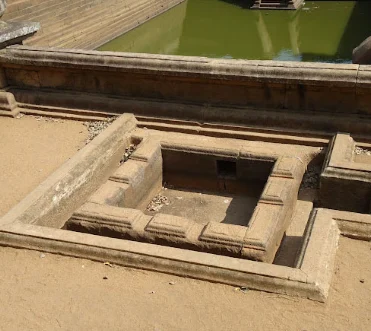
1,200 years ago during the Anuradhapura period, these two identical bathing pools were used by Buddhist monks and showcase the advanced knowledge of water filtration and architecture at the time.
These ingeniously designed bathing tanks highlight ancient Sri Lanka’s advanced hydrological engineering. Part of the Abhayagiri Monastery complex, they feature intricate stonework and symmetrical design. en.wikipedia.org
Key Features:
- Design: Two large stone pools (40ft & 91ft long) built side by side
- Technology: Includes underground filtration systems and drainage
- Aesthetic: Detailed stone steps, symmetrical design, and artistic spouts
- Still admired today for its precision craftsmanship
What to Expect:
- A peaceful, shady garden setting ideal for history lovers and photographers
- A clear view of ancient water conduits and steps leading into the ponds
- Educational plaques and guide explanations on-site
Travel Tips:
- Best visited during early morning or late afternoon for softer light
- Wear comfortable shoes – site requires walking on stone paths
- Don’t forget your camera and a bottle of water
- Combine your visit with nearby Abhayagiri Monastery ruins
You can book your tour with Lanka Tour Driver to enjoy the venu, Check our Packages
8. Isurumuniya Temple & Rock Carvings – Where Art Meets Devotion
Location: Near Tissa Wewa, Anuradhapura, Sri Lanka
The Isurumuniya Temple, also known as Isurumuni Vihara, is a serene rock temple famous for its exquisite stone
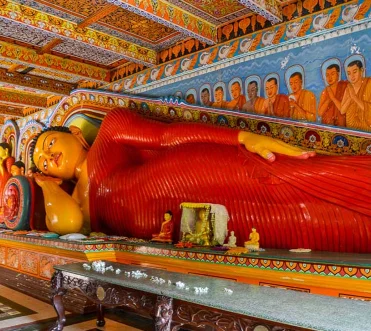
carvings, spiritual ambiance, and ancient architecture. Originally built by King Devanampiya Tissa in the 3rd century BCE, it served as a temple and royal monastery, housing young nobles ordained into monastic life.
Renowned for its exquisite rock carvings, including the famous “Isurumuniya Lovers,” this temple’s serene setting near Tissa Wewa adds to its allure. The carvings reflect the artistic excellence of ancient Sri Lankan sculptors. en.wikipedia.org
Highlights of the Site:
- “Isurumuniya Lovers” Carving: A world-renowned 6th-century sculpture depicting a romantic royal couple, full of elegance and emotion
- Royal Family Carving: Intricate carving believed to represent the royal dynasty
- Elephant Pond Relief: Delightful depiction of elephants bathing, showcasing ancient artistic expression
- Sacred Shrine: Enshrines a small Buddha image inside the temple
What to Expect:
- Climb the rock for panoramic views of Anuradhapura and the peaceful pond below
- Explore the rock-cut shrine, lotus-filled pond, and shady gardens
- Small museum nearby displaying more historical artefacts and carvings
Travel Tips:
- Best visited during early morning or evening to avoid midday heat
- Modest attire is required as it’s an active place of worship
- Wear non-slip footwear for climbing the rock surfaces
- Allocate 45 minutes to 1 hour to explore at a relaxed pace
9. Aukana Buddha Statue – Towering Symbol of Serenity
Location: Near Kala Wewa Reservoir, 30 km from Anuradhapura, Sri Lanka
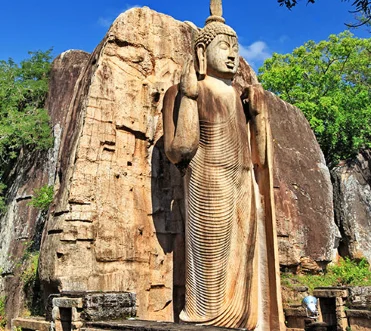
The Aukana Buddha Statue is one of the tallest and best-preserved ancient Buddha statues in Sri Lanka, carved out of a single granite rock face during the 5th century CE, likely under the patronage of King Dhatusena. Standing at over 12 meters (40 feet) high, the statue portrays the Buddha in the Asisa Mudra (gesture of blessing), exuding calm and spiritual grace.
Highlights of the Site:
- Masterful Stone Carving: Chiseled with extraordinary precision — the robe appears to cling naturally to the body
- Standing Buddha Pose: Right hand raised, symbolizing reassurance and protection
- Single-Stone Carving: Remarkably crafted from one granite rock, still connected to its base
- Facing East: Said to receive the first rays of the sun, adding to its spiritual significance
Best Time to Visit:
- Early morning (6 AM – 9 AM): The sunlight hits the statue perfectly, illuminating its divine features
- Avoid midday heat, especially between March and August
What to Bring:
- Comfortable shoes (easy to remove when entering sacred zones)
- Water bottle and sun protection
- Modest, respectful clothing covering shoulders and knees
- Camera or phone (photography allowed outside the temple)
10. Moonstone & Guardstones – Gateways to Ancient Wisdom
Location: Found at entrances of major Buddhist sites in Anuradhapura, including monasteries and stupas
The Moonstone (Sandakada Pahana) and Guardstones (Muragala) are exquisite examples of Sinhalese stone
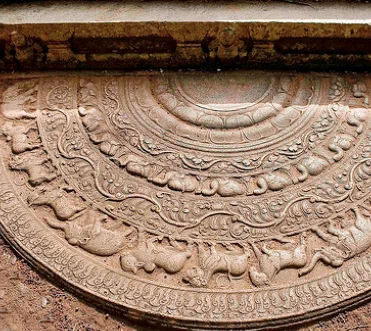
artistry from the Anuradhapura period, symbolizing deeper philosophical teachings and serving as protective elements at the thresholds of sacred spaces.
Moonstone – The Spiritual Welcome Mat
- Semi-circular stone slab placed at the base of stairways leading to temples
- Intricately carved with concentric bands showing flames, animals (elephants, horses, lions, bulls), and lotus petals
- Each band represents a stage of life and rebirth, culminating in the lotus symbolizing nirvana
- Most famous moonstone: Mahasena’s Moonstone at Abhayagiri Monastery
Guardstones – Silent Temple Guardians
- Placed on either side of temple entrances
- Depict nagas (serpent deities) or dwarfish protectors holding pots of abundance
- Serve as both spiritual guardians and aesthetic elements to sanctify temple steps
- Often symbolize fertility, prosperity, and protection
Best Time to Visit:
- Any time during daylight hours (8 AM – 5 PM)
- Great lighting for photography in the morning or late afternoon
- Less crowded during weekdays
What to Bring:
- Modest clothing (required at all religious sites)
- A guidebook or audio guide to better appreciate the symbolism
- A camera to capture the intricate craftsmanship
- Hat and water to stay cool
11. Star Gate (Astronomical Stone) – Sri Lanka’s Mysterious Timekeeper
Location: Near Ranmasu Uyana, between Isurumuniya Temple and Tissa Wewa in Anuradhapura
The Star Gate, also known as the Sakwala Chakraya, is a circular stone carving etched into a rock surface
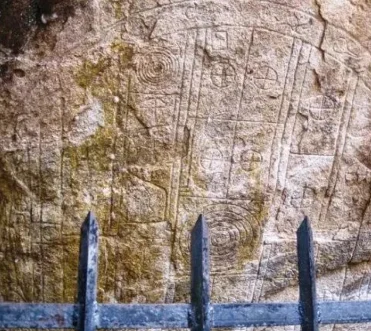
believed to be over 2,000 years old. This cryptic carving is thought by some to be an ancient astronomical map or portal, earning it the nickname “Star Gate of Sri Lanka.”
What Makes It Unique?
- Intricate mandala-like circular design carved into granite
- Features geometrical symbols that some believe represent celestial alignments or planetary systems
- Located in Ranmasu Uyana, once a royal pleasure garden
- Overlooks Tissa Wewa, offering a scenic and spiritual atmosphere
- Some theorists suggest it may have been used for astronomical calculations or even as a “portal map” for star worshippers or monks
⚠️ While there’s no academic consensus, the symbolism and alignment with stars intrigue both archaeologists and spiritual seekers.
Best Time to Visit:
- Morning (8 AM – 11 AM) or late afternoon (after 3 PM) for cooler temperatures
- Visit after Isurumuniya to maintain the historical flow
What to Pack:
- Comfortable footwear (some uneven stone paths)
- Hat and water (the site is exposed to the sun)
- Notebook or camera to capture and reflect on the symbolism
- Optional: flashlight to observe faint etchings clearly
12. Lankarama – The Forgotten Gem of Anuradhapura
Location: Southeast of Abhayagiri Monastery, Anuradhapura, Sri Lanka
Lankarama is a lesser-visited but historically significant ancient stupa in Anuradhapura. Built by King Valagamba
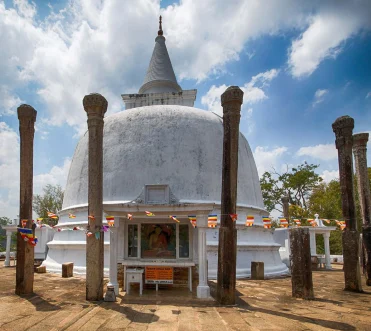
in the 1st century BCE, it was once a well-developed circular shrine featuring a unique architectural element called a vatadage—a circular structure that once enclosed the stupa with pillars and a roof.
Highlights of Lankarama:
- Classic stupa design with restored brickwork
- Surrounded by rows of granite columns (remnants of the ancient vatadage)
- Smaller and quieter than other stupas, offering a peaceful spiritual experience
- Historically served as part of a monastic complex for meditation and worship
What to Expect:
- A tranquil atmosphere, ideal for reflection and photography
- Less crowded, making it perfect for travelers seeking serenity
- A visible layout of the original circular shrine with a stupa at its center
- Insight into the engineering and spiritual dedication of ancient Buddhist monks
Best Time to Visit:
- Early morning (7 AM – 9 AM) or late afternoon (4 PM – 6 PM)
- Visit during cooler hours to explore the surrounding ruins comfortably
13. Mirisawetiya Stupa – A Monument of Royal Devotion
Location: Close to Tissa Wewa Lake, Anuradhapura, Sri Lanka
The Mirisaveti Stupa is an impressive white-domed stupa built by King Dutugemunu in the 2nd century BCE
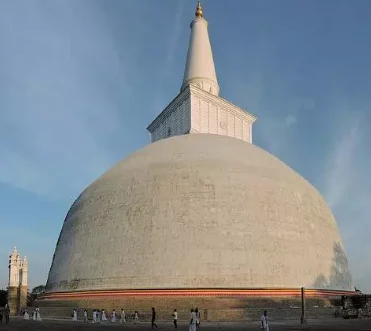
after his victory over South Indian invaders. According to legend, he forgot to offer the first prepared meal (mirisa or spiced food) to the monks, so he constructed this stupa as an act of atonement—hence the name “Mirisaveti”.
Highlights of the Stupa:
- Large, restored stupa with a classic bell shape
- Built on the banks of Tissa Wewa, offering a picturesque setting
- Surrounding ruins include ancient guardstones and stone pillars from the original monastery
- Part of King Dutugemunu’s legacy, symbolizing both spiritual reverence and royal humility
What to Expect:
- Quiet atmosphere, ideal for meditation and contemplation
- A great photo spot, especially during sunrise or sunset
- Beautiful reflections of the stupa in Tissa Wewa nearby
- Often visited by locals for religious offerings and prayer
Best Time to Visit:
- Early morning (6 AM – 9 AM) or late afternoon (4 PM – 6 PM)
- Best light for photography and fewer tourists
14. Abhayagiriya Museum – A Glimpse into Sri Lanka’s Buddhist Heritage
Location: Near the Abhayagiri Monastery Complex, Anuradhapura, Sri Lanka
The Abhayagiriya Museum is a modern archaeological museum built to preserve and showcase the rich cultural

and religious artifacts discovered in and around the Abhayagiri Monastery, one of the largest monastic complexes in the ancient world. Opened in 1992, it offers a deeper understanding of Buddhist monastic life, architecture, and artistry that flourished between the 1st century BCE and the 11th century CE.
Museum Highlights:
- Ancient statues of Buddha and Bodhisattvas, some in pristine condition
- Guardstones, moonstones, and terracotta figurines unearthed from nearby temples
- Detailed stone inscriptions and scripts offering historical insight
- Sections dedicated to monastic tools, ritual objects, and early South Asian craftsmanship
- Well-curated indoor exhibits with descriptive panels in English and Sinhala
What to Expect:
- A well-organized, quiet museum perfect for history lovers
- Indoor galleries in a serene setting amid tall trees and gardens
- Valuable context to appreciate the Abhayagiri Stupa ruins just next door
- Air-conditioned interiors, offering a break from the Anuradhapura heat
Best Time to Visit:
- Late morning (10 AM – 12 PM) or early afternoon (1 PM – 3 PM)
- Spend at least 45 minutes to fully enjoy the exhibits
15. Elephant Pond (Eth Pokuna) – An Ancient Engineering Marvel
Location: Near the Abhayagiri Monastic Complex, Anuradhapura, Sri Lanka
The Elephant Pond, locally known as Eth Pokuna, is a massive ancient bathing and water storage tank built
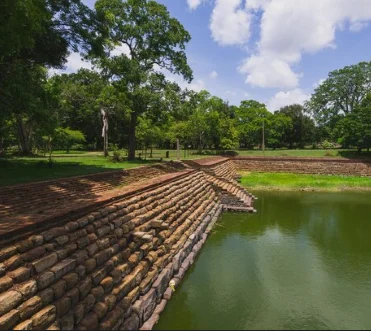
during the Anuradhapura era. Despite its name, it was not primarily for elephants but was used by the thousands of monks living in the nearby Abhayagiri Monastery. Its size and hydraulic sophistication showcase the advanced water management skills of ancient Sri Lankans.
Key Features:
- Measures 159 meters long, 52.7 meters wide, and 9.5 meters deep
- Can hold over 75,000 cubic meters of water
- Fed by a stone-paved underground canal system still functional today
- Surrounded by stone steps and terraces, offering stunning reflections during sunset
- An excellent example of ancient hydraulic engineering and monastic planning
What to Expect:
- A serene and spacious site with few crowds
- Ideal for photography, reflection, and appreciating ancient technology
- Birds and monkeys often visit, adding a natural touch to the historic setting
- Nearby ruins offer more exploration for curious travelers
Best Time to Visit:
- Morning (7 AM – 9 AM) for soft light and quiet atmosphere
- Late afternoon (4 PM – 6 PM) for sunset photography and cooler weather
📅 Best Time to Visit Anuradhapura
The optimal time to explore Anuradhapura is during the dry season, from May to September, when the weather is warm and sunny with minimal rainfall, making it ideal for exploring the ancient ruins and cultural sites scattered throughout the city. en.wikipedia.org
The shoulder seasons of February to April and October to November are also considered good times to visit Anuradhapura. While there may be occasional rainfall, the weather is generally pleasant, and tourist crowds are fewer compared to the peak season.
The off-season in Anuradhapura occurs during the wet months of December to January. Heavy rainfall is common during this time, making outdoor activities challenging and less enjoyable.
🎒 Essential Packing Guide for Anuradhapura
When preparing for your trip to Anuradhapura, consider the following essentials:
Travel Essentials: Passport, travel insurance, and a travel adapter for charging devices.
Clothing: Lightweight, breathable clothing suitable for warm weather; modest attire for temple visits.
Footwear: Comfortable walking shoes that are easy to remove, as you’ll need to be barefoot in sacred areas.
Sun Protection: Sunscreen, sunglasses, and a wide-brimmed hat to protect against the sun.
Hydration: A reusable water bottle to stay hydrated while exploring.
Health & Hygiene: Hand sanitizer, antibacterial wipes, and personal medications.
Catholic alike – in search of healing, hope, and divine grace.
Frequently Asked Questions
How many days should I spend in Anuradhapura?
2 to 3-day stay is recommended to fully experience the city’s ancient ruins and cultural landmarks.
Is it necessary to hire a guide in Anuradhapura?
While not mandatory, hiring a local guide can provide valuable historical context and enhance your understanding of the sites.
Are there any cultural festivals in Anuradhapura?
Yes, the Poson Poya festival in June is a significant Buddhist celebration, attracting many pilgrims and featuring various religious activities.
What should I wear when visiting temples in Anuradhapura?
Modest clothing that covers shoulders and knees is appropriate. It’s also customary to remove shoes and hats before entering sacred areas.
Is Anuradhapura suitable for family travel?
Absolutely. The city’s rich history and cultural significance make it an educational and enriching destination for travelers of all ages.
By following these guidelines, you’ll not only show respect for Sri Lanka’s sacred places but also enrich your own experience of these timeless spiritual treasures. Enjoy your journey through Sri Lanka’s hallowed halls of worship – it’s sure to be as enlightening as it is unforgettable!
